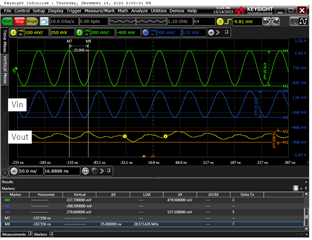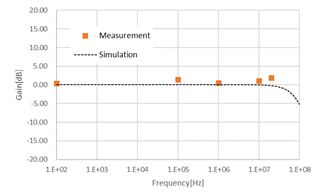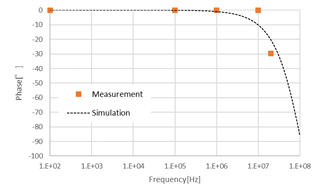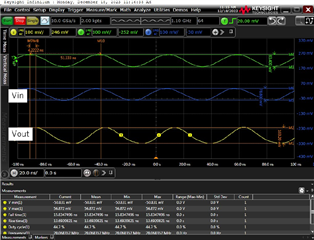I have a question about the gain characteristics and phase characteristics of a voltage follower circuit using LM4562. The simulation results do not match the measurement results. Can you think of any possible reasons for this discrepancy?
the conditions and results below:
■Simulation circuit
I designed the voltage follower circuit to have a gain of approximately 0dB in the frequency range of DC to 20MHz. The load capacitance is assumed to be 1nF, and based on the simulation results, the phase compensation resistor was set to 4.7Ω.

LM4562_voltage follower_231215.TSC
■Board
I created the circuit on a universal PCB. First, I generated a DC voltage using an LDO and an AC voltage using a function generator. I added these voltages together and applied the resulting voltage to the Vin of the operational amplifier. The V- supply of the OpAmp is powered by a stabilized power supply, generating a DC voltage.Additionally, I have added a 1nF capacitor and a 100kΩ resistor as a load and I am measuring the circuit.(I am creating the PCB to be equivalent to the simulation circuit.)
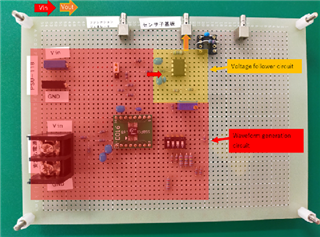
■Result
When the frequency of Vin exceeds 1MHz, the gain characteristics and phase characteristics do not match between the measurement results and the simulation results. Additionally, when observing the waveforms of Vin and Vout at 18MHz, Vout was found to be oscillating. What could be the possible factors contributing to the discrepancy between the measurement results and the simulation results in the high-frequency range (above 1MHz)
・Gain characteristics
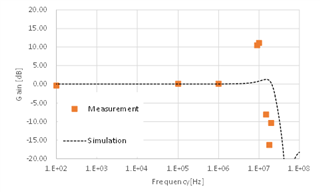
・Phase characteristics
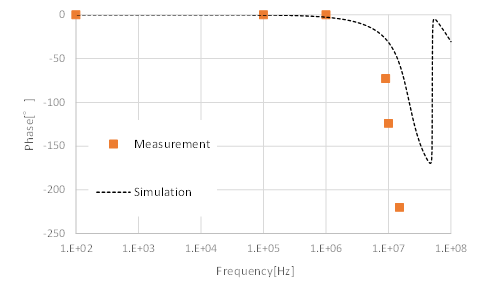
・Waveform of Vin and Vout at 18MHz
